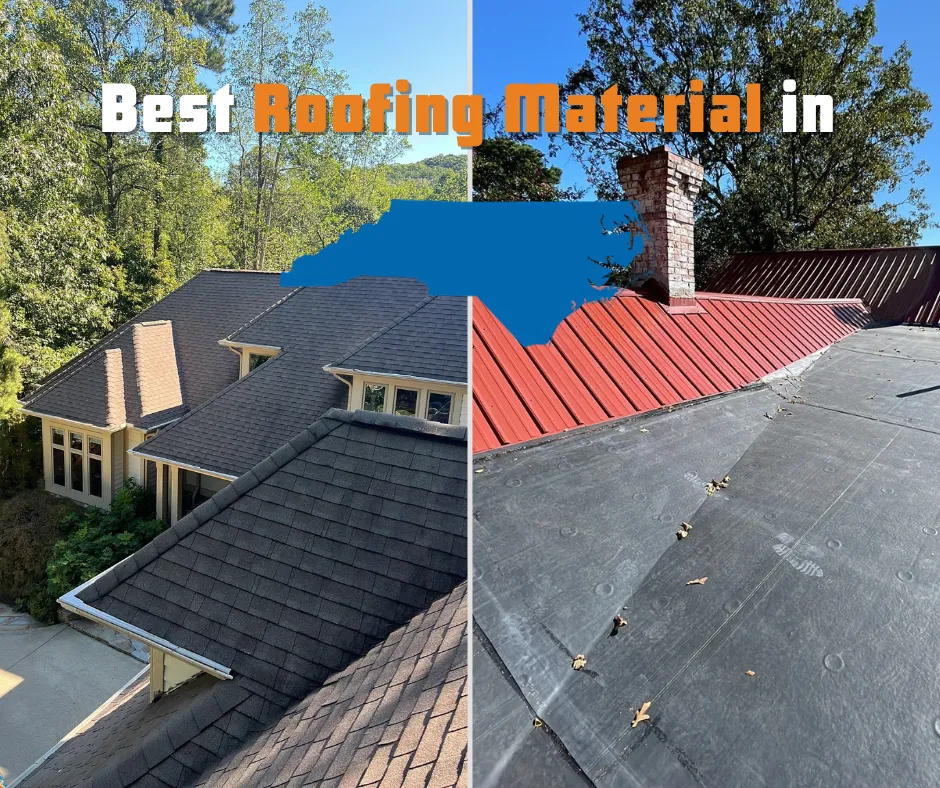Specialist Roof Tips for Choosing the Ideal Materials for Your Home's Demands
When it comes to selecting the ideal roof covering products for your home, a systematic method is necessary. Key factors to consider consist of understanding your regional climate, examining the durability of various materials, and evaluating energy efficiency.
Examining Your Environment Problems

When selecting roofing materials, it is essential to think about the certain environment problems of your area, as these factors significantly influence the longevity and performance of your roof. Different environments posture one-of-a-kind difficulties, such as high winds, heavy snowfall, severe heat, or too much moisture. Recognizing these elements is important for making an informed decision.
As an example, in areas vulnerable to hefty rain or snow, materials like steel or asphalt tiles with high waterproofing capacities may be more effective. Conversely, in locations with high temperatures, reflective materials such as tiles or awesome roofs can aid lower warm absorption, resulting in power performance and enhanced indoor convenience.
Furthermore, think about local wind patterns; products that can endure high winds, like impact-resistant shingles or concrete floor tiles, are crucial in hurricane-prone areas. Moisture levels additionally play a function; in moist environments, go with products immune to mold and mildew and mold, such as synthetic underlayment or dealt with wood.
Inevitably, evaluating your environment conditions will certainly assist ensure that you select roof covering materials that not just improve your home's visual charm yet also give toughness and defense versus environmental stress factors. Roofing Lockhart.
Comprehending Product Sturdiness
Analyzing climate problems is just the primary step in making an educated roofing decision; recognizing the sturdiness of the products is equally essential. The long life and performance of roof materials can differ substantially, affected by elements such as weather condition direct exposure, maintenance demands, and product make-up.

Additionally, consider the material's resistance to elements like rain, hail storm, and wind. For example, impact-resistant roof shingles and steel roofings are much better matched for areas susceptible to severe storms. In addition, the product's capacity to hold up against UV direct exposure is crucial for maintaining aesthetic appeals and stopping early deterioration.
Eventually, choosing sturdy products not only adds to the longevity of your roof but additionally decreases the demand for regular repair services or replacements, making sure tranquility of mind and securing your investment over time. Review durability along with environment considerations to make one of the most enlightened option for your roof covering task.
Power Efficiency Factors To Consider
Power effectiveness plays a crucial role in roof covering decisions, affecting both month-to-month power expenses and total ecological impact. Picking the ideal roofing products can substantially reduce a home's energy intake by improving insulation and reflecting sunshine.
One of the crucial elements to take into consideration is the roof product's thermal performance. Roofing Lockhart. Products such as steel, clay ceramic tiles, and certain kinds of shingles are understood for their ability to show solar power, decreasing warmth absorption and, as a result, cooling down prices. Great roofing choices, which are made to show even more sunlight than common roofs, can additionally boost energy efficiency, particularly in warmer environments
Additionally, the insulation properties of roof products can influence heat retention during chillier months. Products with a greater R-value provide far better insulation, minimizing the requirement for home heating and adding to lower energy expenses.
It is likewise vital my link to think about the roof's color and structure, as lighter shades commonly provide much better reflectivity contrasted to darker tones. By carefully assessing these aspects, house owners can make enlightened choices that not just enhance energy effectiveness yet additionally add to lasting sustainability and convenience in anonymous their living setting.
Budgeting for Roofing Products
Budgeting for roof covering products requires careful consideration and planning to ensure a balance in between top quality and price. The initial action in this procedure is to develop a clear budget based upon your total economic capacities and the specifics of your roof job. It is important to examine the overall area of the roofing system, as this will directly affect the amount of material required and, as a result, the overall cost.
Next, study the numerous sorts of roofing materials readily available, noting their price arrays and durability. While some products might have a lower first price, they might require even more regular repair work or replacements, leading to greater long-lasting expenses. On the other hand, purchasing higher-quality materials might produce better power effectiveness and longevity, ultimately saving cash with time.
Furthermore, consider labor prices, which can significantly affect the general budget. Acquire multiple quotes from reliable contractors to make sure competitive rates. It may be advantageous to establish aside a backup fund-- typically around 10% of the overall spending plan-- to cover unexpected costs that might occur throughout the installment process. By thoughtfully budgeting for roof covering materials, house owners can make enlightened decisions that line up with their lasting demands and financial goals.
Aesthetic and Style Choices
Selecting roofing products exceeds plain capability; visual and style options play a considerable role in enhancing the overall allure of a home. The roof is a prominent attribute that adds to the building style and aesthetic charm of a building. When picking materials, think about how they enhance the home's exterior, consisting of house siding, home windows, and landscape.
Color is a pivotal variable; it can either balance with or contrast the home's scheme. Lighter shades can make a home appear bigger and a lot more inviting, while darker tones can convey style Full Report and heat. Texture also matters; as an example, slate provides a sophisticated, classic look, while steel roof can provide a streamlined, modern visual.
Particular materials might be much better suited for certain designs; for example, clay ceramic tiles function well on Mediterranean-style homes, whereas asphalt shingles are more flexible. Inevitably, the chosen roofing material must mirror the homeowner's personal style while making sure durability and performance.

Conclusion
In summary, choosing appropriate roofing materials demands a thorough evaluation of environment problems, material sturdiness, energy efficiency, and spending plan factors to consider. Eventually, informed decisions in the roof covering option process contribute to a practical and sustainable home setting (Roofing Lockhart).
When it comes to picking the best roofing products for your home, a methodical method is essential.When picking roof materials, it is crucial to take into consideration the particular climate problems of your area, as these variables substantially influence the long life and efficiency of your roofing. By thoughtfully budgeting for roof covering materials, homeowners can make educated decisions that line up with their financial objectives and long-term demands.
Picking roof products goes beyond plain functionality; visual and design options play a significant function in enhancing the general allure of a home.In summary, picking appropriate roof products demands a complete evaluation of climate problems, material toughness, power efficiency, and spending plan considerations.